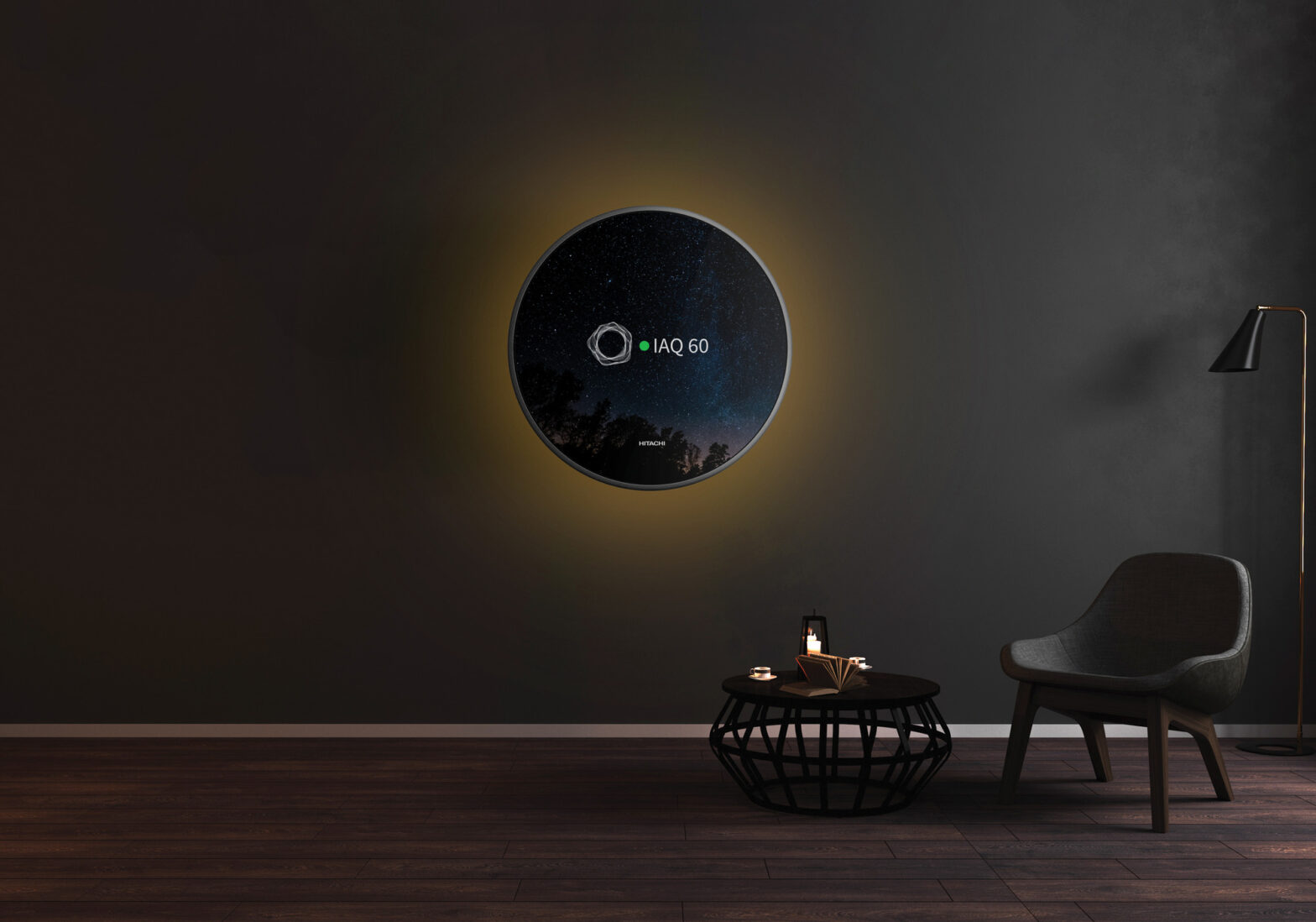The first air conditioning systems were developed in 1902 by electrical engineer Willis Carrier to solve a problem on a printing press in Brooklyn, New York, where moisture threatened to destroy the paper. Since then, air conditioning has evolved from a revolutionary thermal comfort system to an essential element of homes and workplaces. Initially the units were large and centralized and hidden due to their canal system nature. However, this approach is rapidly changing as more energy-efficient, ductless air conditioning systems are increasingly incorporated into modern interiors.
Hitachi Air Conditioning's airPure concept is an example of this development. Air conditioning systems are no longer limited to mere utility, but are becoming aesthetic focal points in the interior design of living spaces. With its minimalist design and multifunctional capabilities, airPure is an artistic addition to modern living spaces. Its retractable vents distribute airflow across walls, ceilings and floors, ensuring users are not exposed to unpleasant direct drafts.
The design was awarded the prestigious Red Dot Award for Design Concept 2024 and represents a paradigm shift in the perception of air conditioning. Its round shape features a multifunctional OLED display that transforms the device into a mirror, a picture frame or an ambient light source and fits seamlessly into any interior. Lawrence Chu, Global UX Design Director at Johnson Controls-Hitachi Air Conditioning, explains:
The airPure concept shows the potential to integrate air conditioning systems into other objects in the residential category beyond their primary function as air blowers. It could even be that in the future the view of air conditioning will change and they will be given much more importance and importance in our living spaces.
Johnson Controls-Hitachi Air Conditioning developed this concept specifically for Generation Z homeowners, responding to their desire for personalized and visually appealing living spaces. For this tech-savvy and demanding demographic, functionality alone is not enough. They are looking for solutions that integrate discreetly yet strikingly into their rooms. “For tech-savvy generations who prioritize aesthetics over bulky plastic devices, there is a growing demand for innovative solutions that fit seamlessly into their spaces,” adds Chu.
However, this user-centered approach came with challenges. When developing airPure, it was a carefully managed process to find the right balance between design elegance and technical functionality. Initial technical capabilities and limitations were used as an opportunity to think about how users would experience the product. This led to an integrated design process where both the exterior and interior of the product were refined under the brand's guiding philosophy of being “quiet yet iconic” and offering “comfort”.
The team dedicated countless hours to exploring dozens of concepts and gathering lots of input until we found a vision that resonated with future users. We realized that achieving an unobtrusive architecture would be one of our biggest challenges, but it was crucial to achieving our vision of air conditioning that harmonizes with modern living spaces.
This user-focused approach emphasizes the evolving dynamics of interior design and underscores applicants' expectation to enhance – rather than disrupt – the aesthetics of a space. “We believe air conditioning should be an unobtrusive aspect of daily life – subtly integrated rather than a focal point of discomfort,” notes Chu. “Our innovative application prioritizes user comfort by creating a gentle breeze that enhances the overall experience.”
In addition to cooling, the airPure display also serves as a versatile decorative element. It can be transformed into ambient lighting to set the mood, a frame to display valuable images or even a mirror, making it as functional as it is elegant. This fusion of technology and design creates a dynamic interaction between technology and interior design. “In an era characterized by modular technological advances, virtually any object can integrate screens, speakers or lighting modules,” notes Chu. “But sensible design enhances the living ambience without compromising the aesthetics.”
Our goal is to transform the perception of air conditioning from mere climate control devices to essential interior design elements that enhance both comfort and style.
As consumers demand more personalized and engaging spaces, innovations like airPure prove that even the most useful items can become design statements. With its careful integration of form and function, airPure invites us to imagine a future where our homes are not only smarter, but also more beautiful.
